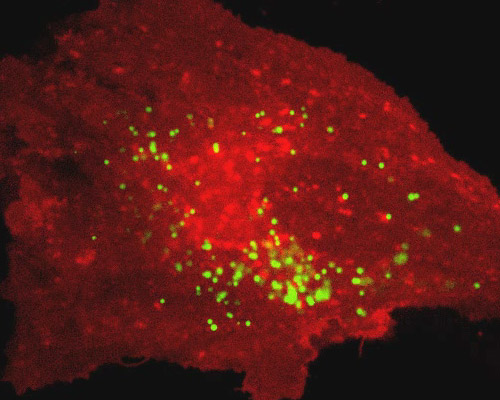Monkey Kidney Cells with mEmerald-PST and mCherry-C-Src

Rous sarcoma virus (RSV) was the first oncogenic retrovirus ever identified. The V-SRC gene is necessary in RSV and certain other retroviruses for the formation of cancer. In 1979 researchers found that normal chicken cells contain a gene structurally similar to V-SRC, often referred to as C-SRC. The discovery of C-SRC led to major changes in the way that cancer was generally believed to occur. Prior to the detection of C-SRC, most people thought that cancer was caused by a foreign viral gene invading normal cells. The existence of C-SRC, however, clearly suggested that native genes could trigger oncogenesis.
C-SRC is fluorescently labeled in this digital video sequence with mCherry and peroxisomes were tagged with mEmerald. A red fluorescent protein developed from mRFP1, mCherry exhibits peak excitation at 587 nanometers and peak emission at 610 nanometers. mEmerald is a green variant of EGFP with excitation and emission maxima at 487 and 509 nanometers, respectively. Besides the S65T and F64L mutations found in EGFP, mEmerald features four additional point mutations.



